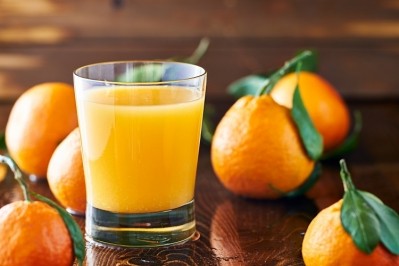KiSS sweetness modulators ‘fool our sensory systems’ for sugar reduction

Richard Stead, a 40-year chemical industry veteran, formed the business four years ago to market high performance, specialist and low volume chemicals to what he describes as a “limited number of industries and a small number of users”.
Around three years ago, Stead, a director of parent group REG Chemicals, sold off his distribution and specialist service companies, both serving food and related industries, in order to focus on marketing the group’s IP-protected flavour solutions.
“I started [the] new company to market a unique way of reducing sugar yet retaining the sweetness and taste. The technique applies to beverages and to food in general, such as dairy, confectionery, bakery,” he told FoodNavigator
KiSS UK is now starting to market its first four products: KiSS sos, KiSS s50, KiSS brix and KiSS alc. These flavour modulators have no taste or flavour of their own but serve to “boost” or “enhance” the existing compounds present in food and beverage formulations, Stead explained.
Matching sugar’s performance standard
According to Stead, the use of KiSS flavours can enable companies to cut as much as 50% of the sugar in their product formulations.
“Up to half the sugar can be removed and through the addition of some new flavourings we can boost the sweetness of the sucrose and if required, for a beverage, also replace the lost mouthfeel. All this is possible through the use of flavourings that have been developed.”
This is no mean feat given the gold standard that the performance of sugar represents, Stead continued. “Sugar’s performance is the standard for all sweetener replacements. Some alternatives are better than others are but none are perfect.”
Nevertheless, cutting sugar has become a business imperative for companies operating in the UK and beyond. In particular, reformulation efforts have been spurred by the “sledgehammer approach” of sugar taxes that have been imposed on soft drinks in the UK and will soon be extended to include dairy drinks.
“The dangers of too much sugar are evident and the reduction in its use is essential. The sugar tax is one way but a sledgehammer approach to solve the problem. I came across techniques that promised better ways to approach the dual problems of reducing sugar yet maintaining its overall performance in terms of sweetness, aftertaste and mouth feel, especially in drinks, but which work in dry foods as well,” Stead said.
As it works to grow its reach, KiSS is capitalising on the momentum behind reformulation efforts spurred by the sugar tax. The group will initially target UK beverage manufacturers interested in avoiding the sugar tax while retaining their brand attributes. It will also focus on companies producing dairy-based beverages.
Stead also sees an international appetite for sugar reduction, with markets like South Africa imposing their own sugar taxes and mounting pressure elsewhere. “The UK leads the EU in sugar taxes but there are growing expectations of a similar tax being imposed by several EU countries so the beverage industry is starting development work on lower sugar products,” Stead revealed.
The three challenges of sugar reduction
Each of KiSS’s products tackle the three biggest challenges facing companies working on reformulation: sweetness, aftertaste and mouthfeel.
KiSS sos is designed to overcome the aftertaste left by other synthetic and natural sweeteners while KiSS s50 can “fool our sensory systems” and boost the sweetness of sucrose present in food and beverage products by as much as 100%, Stead continued. This means that the amount of sucrose needed in a product formulation can be halved without impacting taste.
This is also true for naturally occurring sucrose and Stead noted this presents an important opportunity for fruit juice manufacturers. “Orange juice, which contains about 4% sucrose, can have its sweetness boosted. This means that a juice-based drinks, which are diluted with water, can have their sweetness retained without the addition of any extra sweetening agent by adding KiSS s50. This will allow brands to [make claims around] lower sugar, lower calories, sugar-free and no added sugar messaging.”
However, the removal of sugar or dilution of juice delivers a reduced mouthfeel. KiSS has a solution for this problem as well: KiSS brix. “The addition of KiSS brix gives the products the effect of superb mouthfeel in drinks. It also works well in diary drinks but not in dry foods, such as bakery or confectionery, when other inert solids are used to fill the missing mouthfeel.”
In the alcoholic beverage space, KiSS 50 can be coupled with KiSS alc to reduce sugar and overcome the “astringent nature” of the alcohol. Another flavouring can change rough crude alcohols into smooth tasting superior drinks.
Labelling implications
Consumers are increasingly concerned about what goes into their food, requiring recognisable ingredients lists. This demand has propelled the clean label trend in the food and beverage space.
According to the resent results of a survey commissioned by PR agency Ingredient Communications, 76% of consumers are more likely to buy a product containing ingredients they recognise and trust.
The survey of 1,300 consumers across Europe, North America and Asia-Pacific, also found consumers are willing to pay more for clean label products, with 52% indicating they would spend over 10% more on a food or beverage product that contained ingredients they recognized and trusted. Eighteen percent said they would pay 75% or more extra.
While Stead said that KiSS ingredients are a “mixture of natural and synthetic products that are used separately but also in combinations”, he nevertheless insisted that they can also meet the need for a so-called clean label solutions.
“The products all have the declaration ‘flavouring’ so will probably mean no additional declaration on labels – an important objective when launching new products,” he said.
He added that the group’s flavour modulators are “new and very simple” with the typical addition rates usually standing at less than 0.2% of the finished product volume.




























